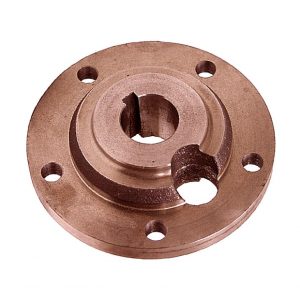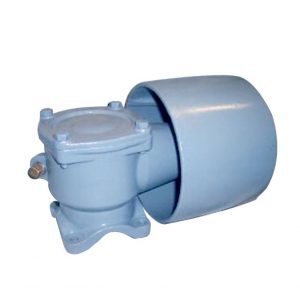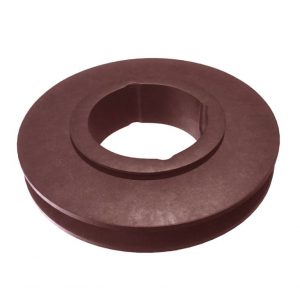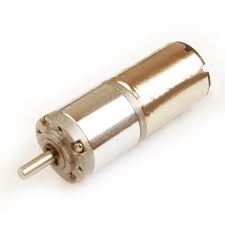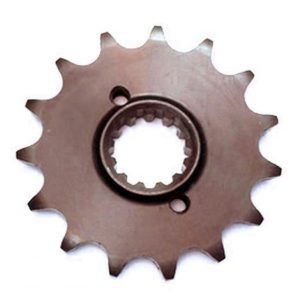Product Description
Welcome to explore our range of conveyor rollers tailored to various standards, diameters, lengths, and types.
We take pride in producing high-quality solutions that meet your specific needs. Don’t hesitate to reach out to us with your requirements and let us exceed your expectations.
Product Description
| Description | Fabrication Services flat belt idler pulley for belt conveyor |
| Application | Used in electric power, metallurgy,mine,coal, cement,steel,chemical, port, hydroelectric power and grain industries |
| Pipe/Tube/Shell | 1)Material:Q235 Steel |
| 2)Diameter:30cm-300cm | |
| 3)Length:500mm-5000mm,depends on the belt width of the conveyor | |
| Shaft/Axis | Material:#45 Steel |
| Bearing | Big roving crack, deep groove ball with double sealing |
| Welding | Pipe and bearing housing with automatic welding |
| Surface | Smooth steel color surface, rubber lagging surface |
| Color | Red,green,blue or as require |
| Service life | More than 30,000 hours |
| Standard | GB,ISO,DIN,CEMA,JIS |
Feature of belt conveyor drive drum for conveyor
1. Steady running, reliable quality and reduce maintenance;
2. Less movement longitudinally, rotating smoothly, extends the life span;
3. Various bearing housing and sealing structure are available for the customers choice;
4. Multipass labyrinthine sealing,preventing the mixed dirt and water immersed;
5.Manufacturing by steel pipe specially for of high precision roller, ensuring the strong load,
low shaking and less noise.
Our Advantages
Our Advantages:
- Experienced manufacturer specializing in electric rollers.
- ISO9001 certified company located in the mechanical and electrical capital of China.
- Products have obtained safety mark certificates and explosion-proof certificates.
- Advanced equipment and precision production capabilities.
- Successfully applied products to large state-owned enterprises.
- Committed to customer satisfaction and continuous improvement.
HangZhou Xihu (West Lake) Dis. Machinery Co., Ltd. is a manufacturer mainly engaged in the production of electric rollers. Our company is located in the HangZhou area of ZheJiang Province, and our series of products such as electric rollers are of high quality and affordable.
Welcome to consult and purchase.
HangZhou Xihu (West Lake) Dis. Machinery Co., Ltd. is located in the famous mechanical and electrical capital of China – Xihu (West Lake) Dis.. Our company has passed the ISO9001 quality system certification, and the electric drum is the first in the industry to obtain the safety mark certificate and explosion-proof certificate for mining products. We have advanced equipment for casting, forging, welding, heat treatment, chemical analysis type experiments, and have introduced a batch of precision production equipment and testing equipment such as CNC gear grinding machines, CNC boring and milling machines, worm grinding machines, and carbon nitrogen co infiltration furnaces.
Our products have been successfully applied to large state-owned enterprises such as GHangZhouba Group, CHINAMFG Petrochemical, CHINAMFG Oilfield, Xihu (West Lake) Dis. Mining Group, Shougang, Hangang, Taigang, Jigang, Yigang, and Baosteel Group.
The company always adheres to the development measures of emphasizing both introduction, absorption, and research and development, and continues to adhere to the business philosophy of “building a city with integrity”. With customer satisfaction as the center, continuous improvement as the driving force, and the unremitting efforts of all employees, we provide users with satisfactory products and services.
We are all sincere and virtuous, and we strive for CHINAMFG and success!
For more details, please feel free to contact us!
Certifications
FAQ
Q1. Are you a manufacturer?
A. Yes, we have been manufacturing and selling conveyor belts for 20 years.
Q2. Can you produce belts of my own brand?
A: Yes, we can.
Q3. What about the lead time?
A. 1) Sample 5~14 days 2) 15~30 days according to the order quantity
Q4. What are the payment terms?
A. We prefer T/T, 30% of the order is prepaid, and the remaining 70% is paid before shipment
Q5. How do you guarantee product quality?
A. 1) R&D center with independent design and development capabilities 2) We have an independent testing laboratory with full performance testing capabilities for conveyor belts.
We can test various materials, rubber, fabrics, semi-finished products and finished products.
/* March 10, 2571 17:59:20 */!function(){function s(e,r){var a,o={};try{e&&e.split(“,”).forEach(function(e,t){e&&(a=e.match(/(.*?):(.*)$/))&&1
| Material: | Aluminum Alloy |
|---|---|
| Surface Treatment: | Baking Paint |
| Motor Type: | Frequency Control Motor |
| Installation: | Slope |
| Warranty: | 1.5 Years |
| Machinery Test Report: | Provided |
| Samples: |
US$ 300/Piece
1 Piece(Min.Order) | |
|---|
| Customization: |
Available
| Customized Request |
|---|
How do multiple pulleys in a block and tackle system work together?
In a block and tackle system, multiple pulleys are used in combination to create a mechanical advantage, allowing for easier lifting of heavy loads. The pulleys in a block and tackle system work together in the following manner:
1. Load Distribution: The weight of the load to be lifted is distributed over multiple strands of rope or cable that pass through the pulleys. This distribution of weight helps in reducing the force required to lift the load.
2. Mechanical Advantage: The mechanical advantage in a block and tackle system is achieved by increasing the number of rope segments that support the load. Each additional pulley increases the number of rope segments, which in turn reduces the amount of force needed to lift the load. The mechanical advantage is equal to the number of segments of rope supporting the load.
3. Tension Distribution: As the load is lifted, the tension in the rope or cable changes. In a block and tackle system, the tension is distributed among the various segments of rope or cable connected to the pulleys. This distribution of tension ensures that the load is lifted evenly and prevents excessive stress on any single rope segment.
4. Rope Arrangement: The pulleys in a block and tackle system are arranged in two sets: the fixed pulleys and the movable pulleys. The fixed pulleys are attached to a fixed point, such as a beam or a ceiling, and do not move. The movable pulleys are attached to the load being lifted and can move freely. The arrangement of the pulleys determines the mechanical advantage and the direction of force required to lift the load.
By combining these principles, multiple pulleys in a block and tackle system allow for the effective lifting of heavy loads with reduced effort. The mechanical advantage provided by the pulleys makes it possible to lift loads that would otherwise be too heavy to lift manually. Block and tackle systems are commonly used in various applications, including construction, rigging, sailing, and theatrical setups.
What role do pulleys play in modern elevators and hoists?
Pulleys play a crucial role in modern elevators and hoists, enabling the smooth and efficient vertical movement of loads. They are integral components of the lifting mechanisms, providing mechanical advantage and facilitating safe and controlled operation. Here’s how pulleys are used in modern elevators and hoists:
1. Lifting Mechanism: In elevators and hoists, pulleys are part of the lifting mechanism that moves the load vertically. They are typically combined with cables, ropes, or belts to create a pulley system. By distributing the load’s weight across multiple lines and changing the direction of the applied force, pulleys make it easier to lift heavy loads. The number and arrangement of pulleys can vary depending on the specific design and requirements of the elevator or hoist.
2. Counterweight Systems: Modern elevators often utilize counterweight systems to offset the weight of the elevator car and reduce the amount of power required for operation. Pulleys play a crucial role in these systems by guiding the cables connected to the counterweight. As the elevator car moves up or down, the counterweight moves in the opposite direction, balancing the load. The pulleys in the counterweight system help distribute the weight and ensure smooth movement.
3. Traction Control: Pulleys are also involved in the traction control mechanism of elevators and hoists. Traction elevators use ropes or belts that pass over a series of pulleys, known as sheaves, to create traction. An electric motor drives the sheaves, causing the ropes or belts to move. By adjusting the rotational movement of the sheaves, the speed and direction of the elevator or hoist can be controlled. The pulleys in the traction control system enable precise and reliable operation.
4. Safety Systems: Pulleys play a crucial role in the safety systems of elevators and hoists. For example, in traction elevator systems, overspeed governors utilize pulleys to detect excessive speed and activate the safety brakes in case of a malfunction. The pulleys in these safety systems help monitor and control the elevator’s speed, ensuring passenger safety.
5. Maintenance and Service: Pulleys in modern elevators and hoists are designed to be durable and require minimal maintenance. They are often equipped with sealed bearings or other lubrication systems to reduce friction and wear. This ensures the longevity and reliability of the pulley systems, minimizing downtime and maintenance costs.
Overall, pulleys are essential components in modern elevators and hoists, enabling vertical movement, providing mechanical advantage, ensuring safety, and facilitating efficient operation. They contribute to the smooth and controlled lifting of loads, making elevators and hoists reliable and indispensable tools in various industries and buildings.
How does a fixed pulley differ from a movable pulley?
A fixed pulley and a movable pulley are two distinct types of pulleys that differ in their design and functionality. Here’s a detailed explanation of their differences:
1. Design and Attachment: A fixed pulley is attached to a stationary structure, such as a ceiling or wall, using a mounting bracket or other means. It remains fixed in place and does not move during operation. In contrast, a movable pulley is attached to the load being moved and moves along with it. It is typically suspended by a rope or cable and can freely move up and down.
2. Mechanical Advantage: When it comes to mechanical advantage, a fixed pulley does not provide any advantage. It changes the direction of the force applied but does not reduce the effort required to lift the load. On the other hand, a movable pulley provides mechanical advantage by reducing the effort needed to lift the load. It distributes the load between the rope segments attached to the movable pulley and the fixed point, making it easier to lift heavy objects.
3. Force Distribution: In a fixed pulley, the force applied to one end of the rope or belt is redirected to change the direction of the force. The load is lifted by pulling the opposite end of the rope. In this case, the force required to lift the load is equal to the weight of the load itself. In a movable pulley, the load is attached to the movable pulley itself. The force required to lift the load is reduced because the weight of the load is distributed between the rope segments attached to the movable pulley and the fixed point.
4. Directional Change: Both fixed and movable pulleys are capable of changing the direction of the applied force. However, the primary function of a fixed pulley is to change the direction of force, while a movable pulley combines force direction change with mechanical advantage. The movable pulley allows the operator to exert force in a more convenient direction while requiring less effort to lift the load.
5. Applications: Fixed pulleys are commonly used in combination with other pulleys to create more complex systems, such as block and tackle arrangements. They are often used in scenarios where the primary objective is to change the direction of force. Movable pulleys, on the other hand, are frequently used in systems that require mechanical advantage or a reduction in the effort needed to lift heavy objects. They are often found in applications such as lifting systems, cranes, and elevators.
Overall, the key differences between a fixed pulley and a movable pulley lie in their design, mechanical advantage, force distribution, and applications. While a fixed pulley primarily changes the direction of force, a movable pulley combines force direction change with mechanical advantage, making it easier to lift heavy loads.
editor by CX
2024-02-03











